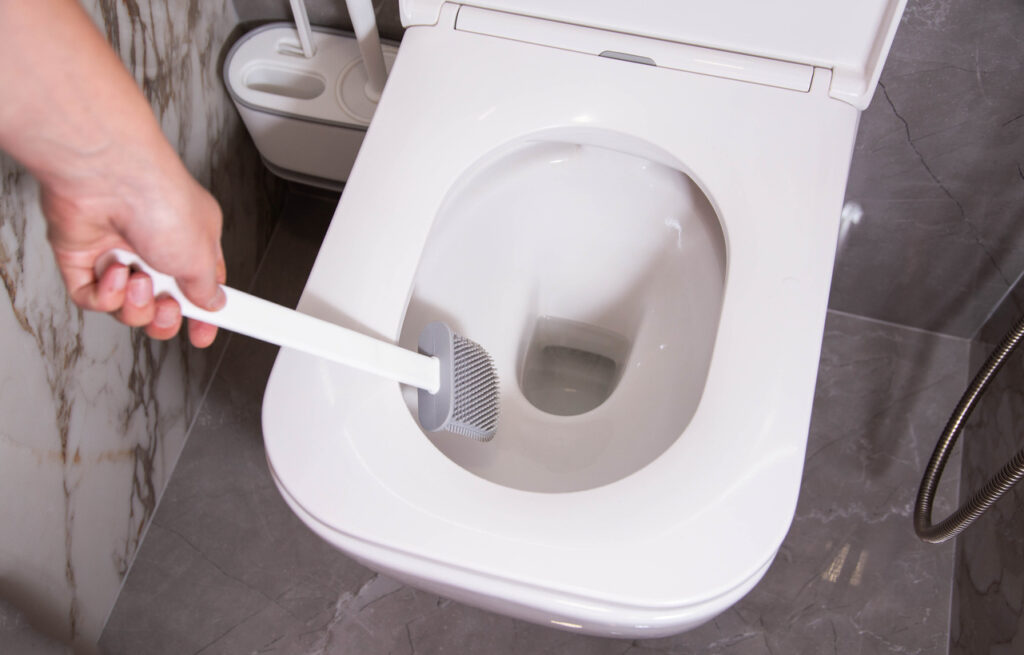What is The Best Way to Get Rid of Limescale in My Toilet ?
The best way to get rid of limescale in your toilet is with a combination of white vinegar, scrubbing, and preventative care. Bathrooms see heavy use, making them prime spots for stains, grime, and buildup. One of the most frustrating issues is limescale, especially in the toilet bowl. While tough to remove, it’s possible with the right approach—and understanding what causes those stains in the first place.
What Is Limescale? What Does It Look like?
Limescale is a white, chalky substance that builds up and collects on appliances and surfaces because of calcium and carbonate ions found in hard water. It contains minerals that are regularly found in hard and unfiltered water, and the stains can leave your house looking dirty and unkept even if it’s not.
Limescale can also even be pink or brownish and look rusty. Since limescale is calcified and hard it can be tough to remove completely and tends to stick to surfaces more than other less-invasive stains. Hard water is something that over 85% of the United States suffers from, and is something you can combat easily.
Getting rid of limescale starts with softening your water. Once your home has soft water, limescale (once cleaned off) will not continue to accumulate. Toilets are one of many appliances that can suffer from the buildup of limescale. The standing water and constant use and moisture tend to perpetuate the calcification of hard water minerals. If you notice a ring around the inside of your toilet bowl and it’s difficult to scrub away, you’re probably suffering from hard water and limescale.
Removing Limescale Buildup From A Toilet:
How to Get Rid of Brown Limescale in Your Toilet
Brown limescale often builds up due to iron and mineral deposits found in hard water. Over time, these minerals cling to the porcelain and oxidize, leaving behind stubborn stains.
- Pour Vinegar Into The Toilet: It may sound strange, but vinegar is a great solution for limescale because of its acidic chemical properties that eat away at calcified limescale. Make sure to coat the entire bowl and any surfaces affected by vinegar. There are other more professional manufactured cleaners, but they tend to be pricier and a lot less pleasant to use.
- Allow The Vinegar To Sit: After you’ve coated the bowl with vinegar, allow the chemical to sit and rest for 3-4 hours, and if the limescale buildup is particularly thick, leave it to sit overnight.
- Scrub The Bowl: After the bowl has sat for a while, use a toilet brush and scrub all the areas with limescale to wipe away the softened minerals and leave the smooth surface underneath.
- Flush Away The Chemicals: After scrubbing, flush the toilet to ensure that all the limescale is gone and wiped away.
- Repeat Until The Bowl Is Clean: If you’ve noticed after the first flush that there are still some marks, repeat steps 1-4 until the marks are gone.
How to Clean Toilet Bowl Stains
Stains in your toilet bowl aren’t just an eyesore — they’re usually signs of hard water, mineral buildup, or even mold. Here’s a quick cleaning method that works:
- Turn off the water valve and flush to empty the bowl.
- Apply a limescale remover or a natural cleaner like lemon juice and vinegar.
- Use a scrub brush or pumice stone to tackle the stained areas.
- Turn the water back on and flush.
Sticking to a weekly cleaning schedule can help prevent stains from coming back.
How to Get Rid of Hard Water Stains in the Toilet
Hard water stains show up as white, chalky rings or streaks caused by calcium and magnesium. The longer they sit, the harder they are to remove.
Here’s how to clean them:
- Pour a generous amount of vinegar into the bowl and let it sit overnight.
- In the morning, scrub with a toilet brush or pumice stone.
- Add baking soda if the stains are especially thick or crusty.
- Flush to rinse the bowl clean.
If hard water stains are a constant issue, consider installing a water softener to reduce mineral buildup at the source.

Protect Your Toilet With a Culligan Water Softener
If you’re constantly battling limescale, brown rings, or hard water stains, your water is likely high in minerals like calcium and magnesium. While cleaning helps short term, a long-term solution starts at the source.
A Culligan® Water Softener can reduce the hardness in your water, helping prevent limescale from forming in your toilet, pipes, and appliances. Pair it with a whole home filtration system for added protection against iron, chlorine, and other minerals that contribute to stains and buildup.
Get customized recommendations for your home with a free water test from your local Culligan expert.
The best way to prevent hard water stains and limescale in your toilet is to keep your water soft. Hard water is the culprit for these issues, and water softeners/filtration systems are the solutions for long-term cleanliness of your home and appliances.
